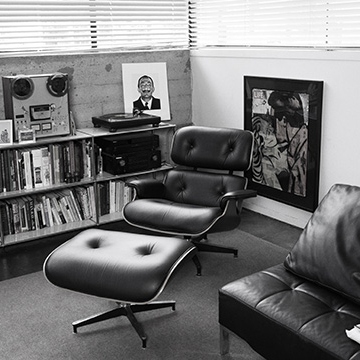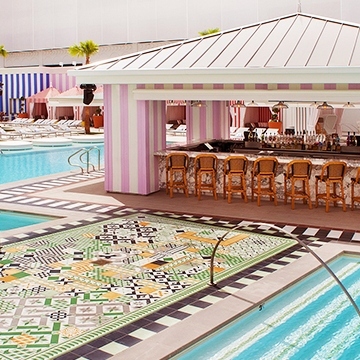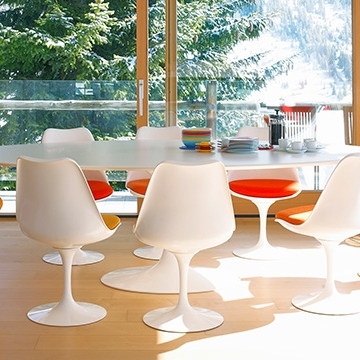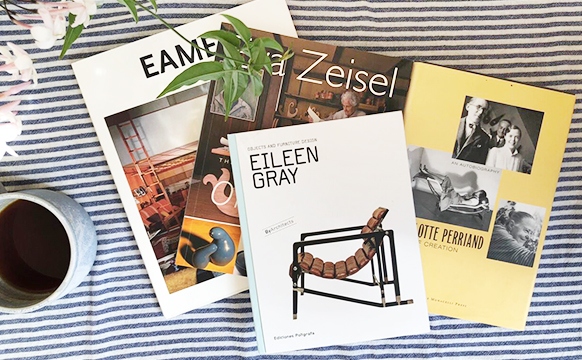

Designing Women: Female Architects & Interior Designers We Love
Like many industries, architecture and design have a long way to go in the male-domination department. Only three of the world’s 100 biggest architecture firms are headed by women. Zaha Hadid remains the only solo woman to have received a Pritzker (only two other women have been awarded the prize along with partners, Kazuo Sejima and Carme Pigem). Full-time female architects earn 20% less than their male counterparts.
If anything, the mid-century statistics were likely worse. But when you look at the work of female architects and designers of the era, it’s clear these disparities have nothing to do with talent. Here we’re taking a dive into the lives and designs of some of our favorite female designers from the early-to-mid 20th century, with insights from Associate Home & Art Director Brittany Gersh.
Eileen Gray
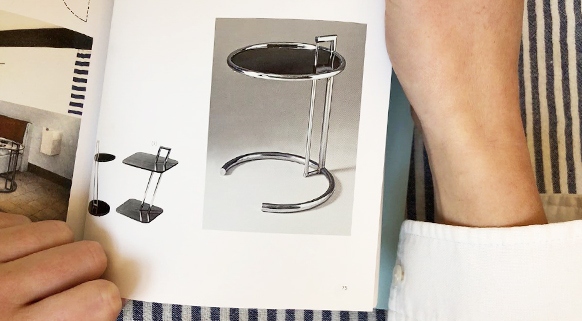
At a time known for being inhospitable to ambitious women, Eileen Gray seemed to do it all. Furniture design, gallery ownership and holistic architecture are all accomplishments of the Paris-by-way-of-London designer born in Ireland in 1878.
On the one hand best known for her lacquer work, which incorporated both traditional technique and modern aesthetic innovation, at her Galerie Jean Désert her best selling items were geometric rugs. And yet now if a single piece’s popularity were to represent Gray, it might have to be the chicly cold, tubular E1027 table designed to furnish her architectural project at Roquebrune.
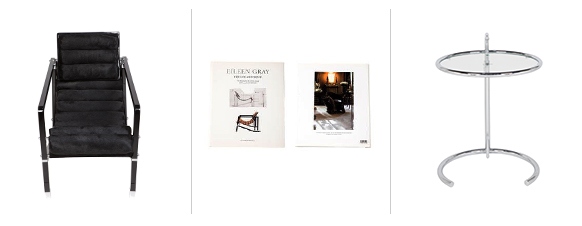 Eileen Gray Pair of Transat Chairs | Eileen Gray Biography | Eileen Gray Chrome Side Table
Eileen Gray Pair of Transat Chairs | Eileen Gray Biography | Eileen Gray Chrome Side Table
Gray’s most superlative piece in another sense is her ‘Dragons’ armchair which set the record in 2009 for the price of single piece of decorative art, selling for $28.3 million from the collection of Yves Saint Laurent and Pierre Bergé. “In addition to her furniture, she designed whole interiors,” Gersh points out, “at the time a recently established concept which was referred to as gesamtkunstwerke, meaning ‘total work of art.’” This explains why Gray saw the infamous murals Le Corbusier emblazoned on the walls of E1027 as defacements rather than the gifts of a fellow artist. E1027 has recently received the restoration efforts it deserves, and if you find yourself in the south of France, you can have the pleasure of immersing yourself in at least one of Gray’s all-encompassing designs.
Charlotte Perriand
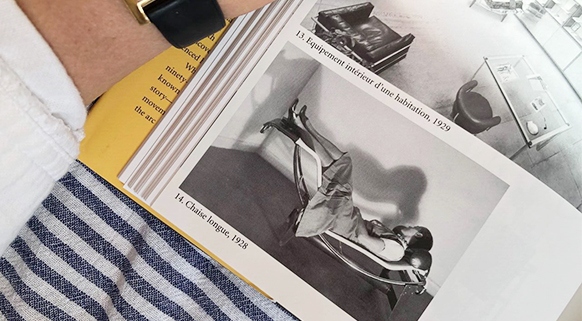
French designer Charlotte Perriand was also no stranger to Le Corbusier, who, infamous again, once told her, “We don’t embroider cushions here,” before showing her the door to his atelier. Turns out Perriand is not an embroiderer. At the time she eschewed even tablecloths — “instead the table was fitted with a mechanical device that used chrome and steel runners to unfurl a black rubber covering.” At the Salon D’Automne of 1927, Le Corbusier saw her ‘bar sous le toit.’ All gleaming aluminum, nickel and glass, her furniture and bar installation was a far cry from a cushion, and located Perriand firmly in the thrall of the machine age that inspired her. Realizing the error of his ways, Le Corbusier brought her on as an associate at the atelier, where she worked with him and Pierre Jeanneret on furniture designs including the iconic LC2 Gran Confort armchair and LC4 Chaise Longue — designs for which she wouldn’t see equal credit with them until relatively recently.
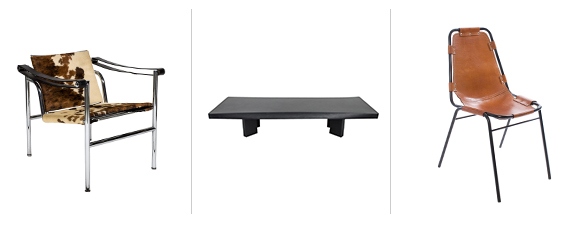 Cassina LC1 Sling Chair | Cassina Charlotte Perriand 515 Plana Coffee Table | Charlotte Perriand Les Arcs Side Chair
Cassina LC1 Sling Chair | Cassina Charlotte Perriand 515 Plana Coffee Table | Charlotte Perriand Les Arcs Side Chair
While Perriand embraced the hard-edged materials of the 20th century, she bent them to the curves of human need through creative design. “Perriand’s creations are synonymous with functional designs, practical materials, and clean modern lines,” Gersh points out. “Concealed in her designs are thoughtful, ergonomic qualities. She thought about how people sat — where their feet hit the ground, how their backs adjusted — before the concept of ergonomics truly existed. She put the human element at the center of her designs.”
Eva Zeisel
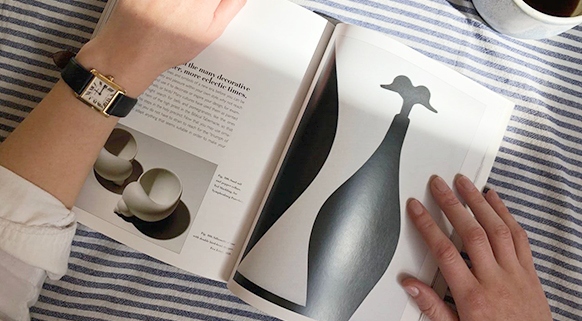
“Eva Zeisel was a pioneer in modern design and ceramics,” says Gersh. Like other female designers of her era, Zeisel was inspired by modernism, but also saw beyond its abstract principles and adapted them to create beautiful objects that had a place in daily life as it is lived. Far from relegating such designs to second-class status, Zeisel eloquently explains their vital importance: “To create things to be used, to be loved, to be with, to give as a gift, to fit into a normal day, to match a festive mood, to be proud of, is to create the culture of life that surrounds us.”
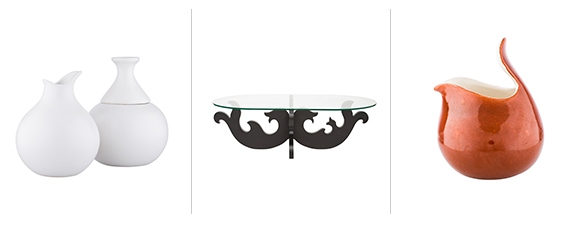 Eva Zeisel Sugar & Creamer | Design Within Reach Eva Zeisel Coffee Table | Eva Zeisel Town & Country Creamer
Eva Zeisel Sugar & Creamer | Design Within Reach Eva Zeisel Coffee Table | Eva Zeisel Town & Country Creamer
Zeisel’s shapes seem prescient — at once artful and unfussy, a combination that seems to be at the heart of contemporary domestic desires. “Her organic forms conveyed a sense of beauty and life that wasn’t typically associated with modernism,” Gersh explains. They combine a designer’s technical understanding of geometry with an ur appreciation of the curve of a shell, the familiarity of a bird, the silhouette of a mother and child. It’s difficult not to interpret this as the kind of eye only a woman at the time could bring to design. “Men have no concept of how to design things for the home,” Zeisel told a writer, according to the New York Times. “Women should design the things they use.”
Ray Eames
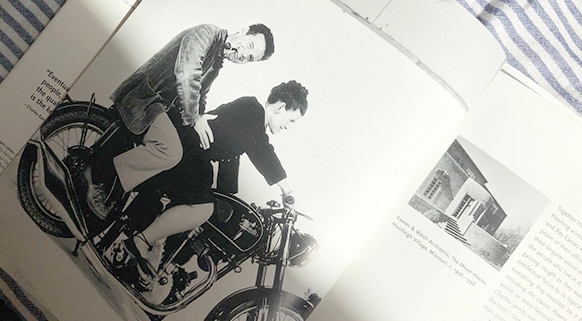
Ray Eames is often spoken about in the context of a duo with her husband Charles. And after all, it was together that they achieved many of their design feats: the moulded plywood chair (and moulded plywood splints during WWII), the Case Study houses, the more than 125 films. But Ray, born Bernice Alexandra Kaiser in Sacramento, CA, had her own design identity. Her passion and skill for drawing at an early age led her to begin her career by studying art under famed Abstract Expressionist Hans Hofmann in New York. There she was also a founding member of the American Abstract Artist group, which formed in 1936 and fought for the work of avant-garde artists to be shown in the city’s galleries and museums.
After New York, Ray’s journey took her to Cranbrook in Michigan, a mid-century mecca where many future design luminaries crossed paths. It was there that she met Charles and the partnership that would transform the world of design began. The pair married and decamped to Los Angeles, a place that would serve as an enduring home base for their designs, notably their own Case Study house in Pacific Palisades. Soon after they arrived in the city, Arts & Architecture magazine editor John Entenza introduced them to Richard Neutra, who set them up in one of his apartments.
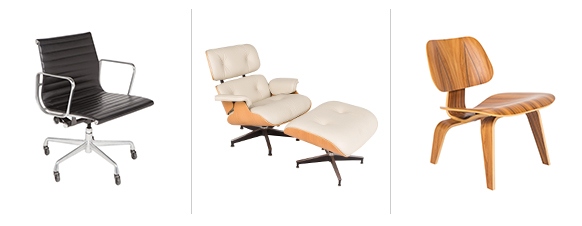 Herman Miller Eames Aluminum Management Chair | Herman Miller Eames Lounge Chair & Ottoman | Herman Miller Eames Limited Edition LCW Chair
Herman Miller Eames Aluminum Management Chair | Herman Miller Eames Lounge Chair & Ottoman | Herman Miller Eames Limited Edition LCW Chair
There the Eameses built a primitive plywood bending system, the delightfully named ‘Kazam! Machine,’ that would prove the starting point for mass-produced icons. Their relationship with Entenza was key, and in addition to the Case Study program Ray designed bold, graphic covers for Arts & Architecture magazine in the ‘40s. “As more and more scholarship comes to light, it’s clear that Ray’s influence in their partnership made Eames furniture what it is today,” says Gersh. “She had a creative way of thinking about space and what made something beautiful. She found beauty in antique candle holders, just as she did humble materials like moulded plywood. She had a playful, dynamic approach to modernism.”
Florence Knoll
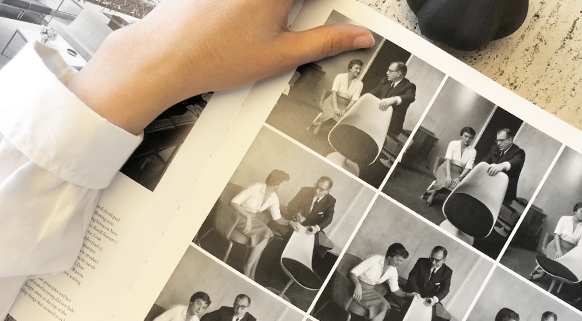
When you think of women in the ‘40s and ‘50s, you don’t often imagine a lone woman leading the redesign of corporate America’s interiors in a boardroom full of men — but that’s what Florence Knoll was doing. When Florence Knoll, born Florence Schust, came on as a full-time employee at her husband’s company it was rechristened Knoll Associates to reflect her co-leadership. She then wasted no time in establishing the first-of-its-kind Planning Unit — an in-house, full-service design and planning practice — that specialized in total design from fabrics, to furniture to architecture. She was uniquely well trained for it.
Something of a wunderkind, Knoll knew she wanted to study architecture from a young age. When her parents died while she was still a young girl, she chose to attend Cranbrook to pursue this path. There she was taken under the wing of Eliel Saarinen, then Cranbrook’s headmaster, and his family (she came to call Eero Saarinen her ‘big brother’). Later, she studied architecture in London and earned her degree from the Illinois Institute of Technology, where she studied under another great: Ludwig Mies van der Rohe, whose furniture her company would later produce.
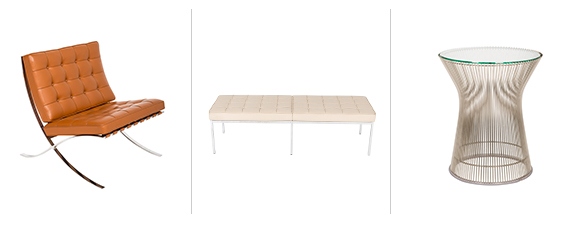 Knoll Barcelona Chair | Knoll Florence Knoll Bench | Knoll Platner Side Table
Knoll Barcelona Chair | Knoll Florence Knoll Bench | Knoll Platner Side Table


